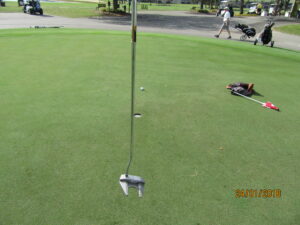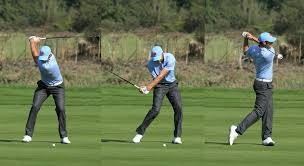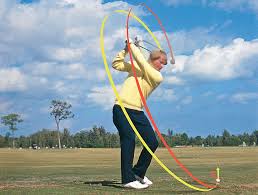How often do you start a round of golf and wonder WHO will be showing up that day? Did you ever consider that your tight muscles may be throwing your game off? If your body is tight and you make swing mistakes on your first hole, it will start to tighten up your mental outlook frustration too. Ideally you should plan to start every round relaxed, confident and physically flexible.
I first recognized that flexibility was important when I played rounds of golf with much younger, weaker players. I noticed that even skinny teenagers were easily able to drive 250 yards with limited effort. Flexibility should be at the top of your list if you every want to improve your game.
Get Flexible
A few months ago, I received an email from Jillian Anderson, an Australian Sports Fitness Advisor, who offered her FREE GOLF FITNESS GUIDE. She was impressed by our weekly GOLFSTR Swing Tips and encouraged me to share her guide with you. About 60,000 readers have enjoyed this guide and I think its a great one for golfers everywhere.
By committing to a golf stretching program you will not only increase your power and reduce the risk of injury, but it will also help you maintain a more consistent swing for a lower handicap!

Natalie Gulbis and smart professional golfers depend on flexibility for their best performance.
Critical Area of Focus
There are many sections in this guide but I am focusing my effort on 2 sections titled: Golf Stretching Exercises and Pre-Game Warmup. I was surprised to see that Static Stretching Exercises can actually hurt your game unless you use them to stretch out your muscles on days when you are not golfing. And you should use Dynamic Stretching Exercises just before you play your round of golf.
Jillian provides a sequence of the right exercises to help golfers improve physical flexibility. She points out that you need to warm up your muscles before you start your daily or pre-game stretch exercises. In general, your daily Static Exercises are slow, deliberate stretches where you hold the stretch for about 20 seconds. Pre-game dynamic stretch exercise are all about rapid, warmup motions to wake-up your body and get your muscles firing.
Jillian put it this way: “More research is showing that static stretching before a sport that involves powerful movements (such as the golf swing) can negatively affect performance. Simply put, this type of stretching reduces how powerfully you can contract your muscles and so potentially, how far you can hit the ball. For this reason athletes in most sports are now advised to increase their flexibility either on separate days, or after a game, with Static Stretches and to warm-up (for a round of golf) with Dynamic Stretches.” Click here for a free copy of her guide: GOLF FITNESS GUIDE
The more you relax your muscles during each swing the more your flexibility will improve your game. Practice with your GOLFSTR+ at the driving range after you warm up with your pre-game Dynamic Exercises. Your increased flexibility will create more power and confidence in every shot that you make. Buy one today at www.golfstr.com





